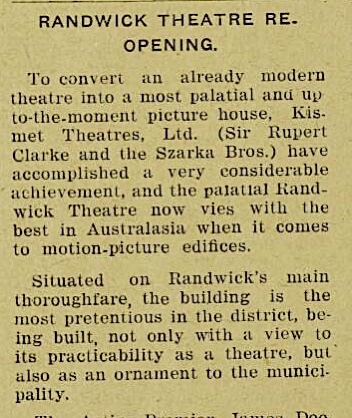The NSW Schoolhouse Museum is located on the school grounds of North Ryde Public School, in North Ryde, a suburb of Sydney.
The museum has many artifacts, where visitors can
participate in lessons, write using ink and on slate boards. Also, have fun with various outdoor activities of the past, such as playing quoits and maypole dancing while dressed up in clothing typical of that time.
The
museum includes preserved classrooms dating from 1877 and 1910 and a 1950s demountable classroom.
A day full of fun and
historical learning.
 |
"UNFURLING THE FLAG"-EMPIRE GREETINGS AT RYDE
SUPERIOR PUBLIC SCHOOL Australian Town and Country Journal (Sydney, NSW : 1870 - 1919), Wednesday 20 November 1907 |
 |
Corporal George Victor Goodwin, second youngest son of Mr. and Mrs. A. Goodwin, of Belmore-street, Ryde, is reported to have been killed in action at the Dardanelles between August 7th and12th. He was 26 years of age, and was educated at the Ryde Superior Public School. Cumberland Argus and Fruitgrowers Advocate (Parramatta, NSW : 1888 - 1950), Saturday 11 September 1915 |
 |
| OLD PAROCHIAL SCHOOL. This building, which stands on the corner of Parramnatta-rqad and Belmoroe Street, Ryde, is about to be demolished. It was erected in 1838 and was used as a parochial school.Cumberland Argus and Fruitgrowers Advocate (Parramatta, NSW : 1888 - 1950), Friday 25 March 1927 |
Around the NSW Schoolhouse Museum |
| The Ryde Schoolhouse Museum, NSW, includes preserved classrooms dating from 1877 and 1910 and a 1950s demountable classroom |
 |
| NSW Schoolhouse Museum, Ryde, NSW |
 |
| NSW Schoolhouse Museum, Ryde, NSW |
 |
| NSW Schoolhouse Museum, Ryde, NSW |
 |
| NSW Schoolhouse Museum, Ryde, NSW |
 |
| NSW Schoolhouse Museum, Ryde, NSW |
 |
| NSW Schoolhouse Museum, Ryde, NSW |
Places To Go
The NSW Schoolhouse Museum
Addington House is a heritage-listed former farm, residence and orchard and now community facility located at 813 Victoria Road, Ryde in the City of Ryde local government area of New South Wales, Australia. It was built from 1794 to 1841



































































